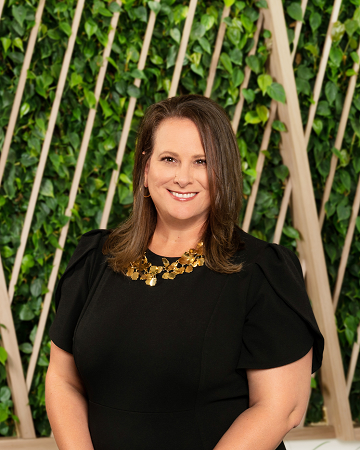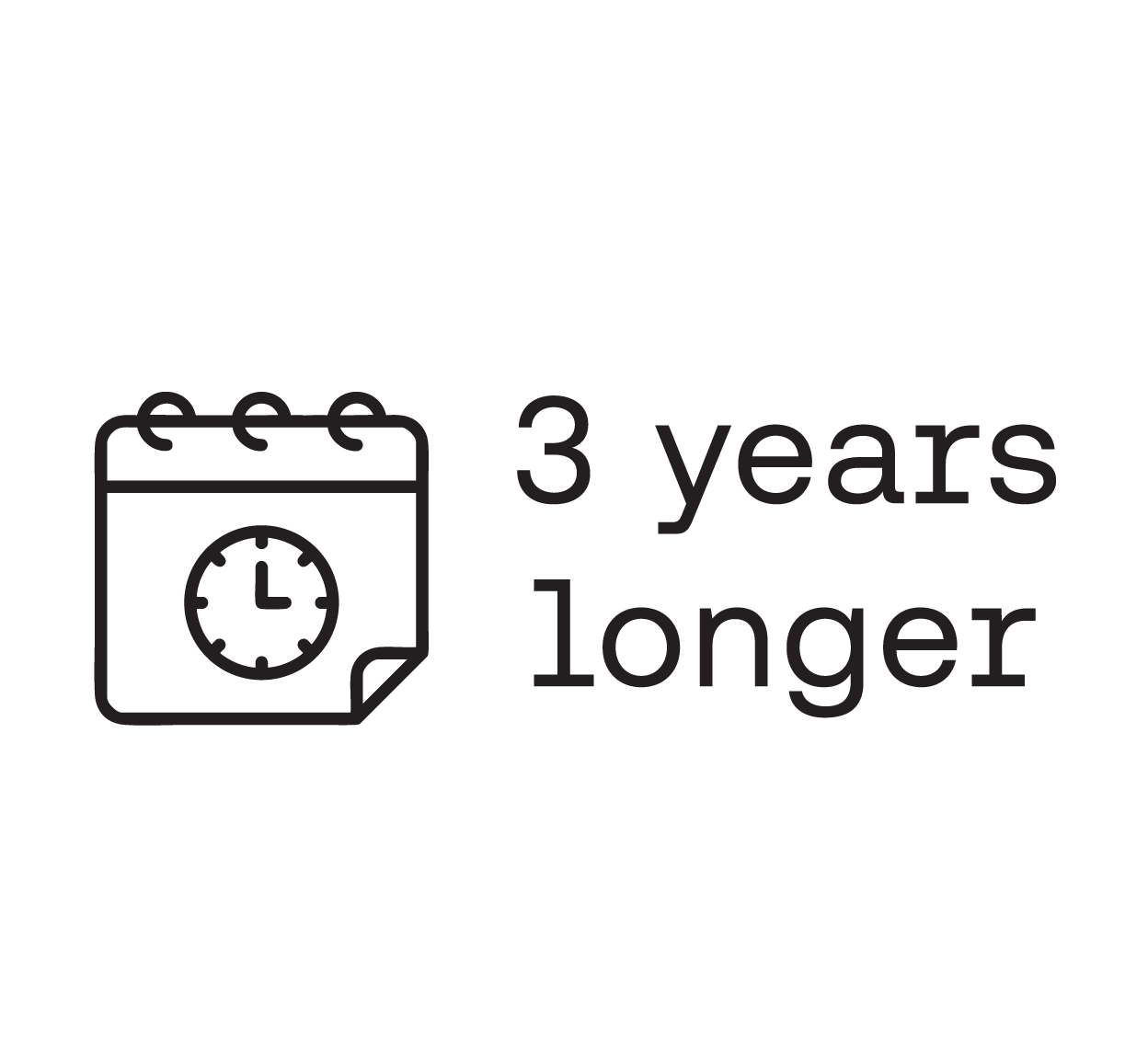The Glass Chair



THE GLASS CHAIR: UNLOCKING THE VALUE OF WOMEN IN FINANCE

The AI opportunity:
Accelerating women in finance
Future-ready CFO: Skills that define the modern finance leader
Routes to CFO: Broader�experience, deeper impact
A CFO advantage: Women in finance deliver measurable growth
Executive summary
About the study
Foreword

Unlocking the value of women in finance
Foreword
The Glass Chair represents the top seat in finance that women still struggle to claim —�held back by persistent barriers that slow their progression and limit the full potential of the businesses they could lead.
Pam McIntyre, Senior Vice President,
Corporate Controller at OneStream Software
Our findings show that across publicly listed companies in Europe, the UK, and the US, organizations led by women CFOs deliver an average annualized shareholder return of 4.5%.
By empowering women — already strong in other critical areas critical to the role — with AI capabilities, companies can speed up adoption, unlock new performance, and position finance to lead into the next decade.
The first study in our Finance 2035 Initiative,
Return to Investment, revealed that the CFO role
is undergoing a profound transformation. Today’s
finance leaders are no longer just financial stewards;
they’re expected to be strategic growth drivers, digital visionaries, and cross-functional collaborators who shape the future of the business.
As CFOs take center stage, we set out to examine not only the skills that define the modern CFO, but also the role women play in accelerating digital adoption, closing the AI skills gap, and reshaping the Office of Finance.
Many of the defining traits of a modern CFO — empathy, adaptability, communication, and systems thinking — are areas where women often excel.
The research also found that women often take longer to reach the CFO role. But in doing so, they gain operating and cross-functional experience that equips them with the perspective, adaptability, and leadership that the role demands. Women in senior finance roles are also helping lead the charge in digital transformation — embracing automation, prioritizing AI skills, and identifying digital literacy and strategic leadership as the top capabilities for the future.
And yet, barriers persist. Women are eager to build AI skills but less confident in adopting AI tools compared to their peers. Closing this gap is one of the fastest ways businesses can accelerate transformation.
When women reach the CFO seat, they outperform benchmarks, accelerate digital transformation, and bring the skillsets businesses need to thrive in an uncertain future. This report serves as a call to action for all companies: advancing women into CFO roles enhances innovation, competitiveness and modernizes a critical business function: Finance.

About the study
Between February and July 2025, OneStream partnered with Man Bites Dog to conduct a multi-method research study exploring the pathways to senior finance positions for men and women — and the impact of greater gender equity in finance leadership.
Economic Analysis
Working with economic forecasting and analytics firm, Cebr, we collected the share prices of over 100 large publicly traded companies from across the UK, Europe, and the US that currently employ, or have previously employed, a female CFO. We obtained the closing share prices from the day the female CFO joined the firm, five years prior to their start date, and the day they left (or April 9th, 2025, if still in post).
Based on these prices, we calculated the annualized return of the shares in the pre-tenure period and over the tenure of the female CFO. For a relative comparison, these were then benchmarked against the returns of each company’s sector index over the same two periods. This allowed us to calculate the absolute annual return and return relative to similar companies before and during the female CFOs’ tenure. These were then averaged across the samples.
LinkedIn data analysis
Working with data science content agency, Bang Analytics, we analyzed the LinkedIn profiles of 346 CFOs — 86 women and 260 men — from Fortune Global 500 (referred to throughout the report as ‘Global 500’) and FTSE 100 companies to compare the career trajectories to top finance roles. By examining their previous roles and skillsets, we identified whether they followed traditional finance pathways or entered through alternative routes. These insights also allowed us to group CFOs into distinct personas, highlighting differences in leadership approaches and revealing where women CFOs most closely align.
Opinion research
To support our economic findings, we conducted opinion research in association with global market research agency, Coleman Parkes Research Limited. The survey was conducted among 700 senior finance professionals — 350 men and 350 women —working as CFOs, Senior Finance Directors, and Finance Directors in mid-market and enterprise organizations.
In addition to global insight, the study provides both market- and sector-specific perspectives.
• Markets: USA, UK, France, Germany, Australia
• Sectors: Financial Services, Manufacturing, Retail & Consumer, Technology, Pharma/Healthtech
Women in Finance Advisory Board
To enrich our findings, we established an advisory board of 10 senior women in finance to offer fresh perspectives on the data and contribute a valuable qualitative dimension to the research.
Advisory board members include:
Alicia Allen�Leader in Accounting, Finance and
Business Process Transformation
Hope King�Founder of Macro Talk, and Contributor
to Axios and Yahoo Finance
Cathy Kresnak
CFO, Air Distribution Technologies
Devina Rankin
Executive Vice President & Chief
Financial Officer at WM
Executive Summary
Fewer than one in four CFOs in Global 500 and FTSE 100 companies are women — a figure that hasn’t changed since 2011. So, what’s holding women back? And what do businesses stand to gain by championing women in finance leadership?
The Glass Chair: Unlocking the Value of Women in Finance
Full Report

A CFO advantage: Women in finance deliver measurable growth
4.5%

10%

Across publicly listed companies in Europe, the UK, and the US, those with women CFOs are outperforming industry benchmarks. In fact, organizations led by women CFOs deliver an average increase in annualized total shareholder return of 4.5% – 0.2% higher than industry benchmarks.
Even where women are appointed as CFOs at underperforming companies, those organizations have gone on to achieve a 10% average increase inimprove total shareholder return, relative to industry benchmarks, by an average of 10%, compared to the performance under their previous CFO.

Future-ready CFO: Skills that define the modern finance leader

Women as ‘Financial Guardians’ and ‘Strategic Architects’: Based on the skills listed on their LinkedIn profiles, women CFOs are most likely to align with personas that emphasize financial governance, strategic leadership, and team development.
Routes to CFO: broader experience, deeper impact

Among Global 500 and FTSE 100 companies, it takes women an average of 18 years to reach the CFO role — three years longer than their peers.
Women are also more likely to take a non-traditional path to the CFO role, developing broader enterprise-wide experience, stronger leadership capabilities, and deeper operational insight.
Catalysts for change: Unlocking the value of women in finance leadership

A CFO advantage: Women in finance deliver measurable growth
Fewer than one in four.
Despite being underrepresented in CFO roles, OneStream’s research reveals a compelling trend: companies with women in the top finance position often outperform industry benchmarks and increase the value of their firms.




The percentage of CFO roles in Global 500 and FTSE 100 companies held by women:






23.4%
On average, publicly listed companies in Europe, the UK, and the US led by women CFOs are outperforming industry benchmarks. In the Energy/Industrial sector, companies led by women CFOs have delivered an average annualized total shareholder return of 2.8%, relative to industry benchmarks, and in Healthcare, they have delivered an average return of 4.7%.1
23.7%
22.2%
In the Global 500
Globally
In the FTSE 100
Average annualized total shareholder return for organizations with women CFOs, relative to industry benchmarks:
ENERGY/INDUSTRIAL ORGANIZATIONS
HEALTHCARE ORGANIZATIONS
EUROPE-BASED ORGANIZATIONS
UK-BASED ORGANIZATIONS

2.8%
above industry benchmarks
4.7%

above industry benchmarks2
3.2%

above industry benchmarks
1.5%

above industry benchmarks
Even when women CFOs join firms that are underperforming, those organizations have gone on to achieve notable success —improving total shareholder return, relative to industry benchmarks, by an average of 10%, compared to the performance under their previous CFO. This improvement holds true even when firms continue to trail industry benchmarks overall.
Average improvement in total shareholder return, relative to industry benchmarks, for underperforming firms after appointing a woman CFO:

7.3%
USA-based
organizations
12.8%
UK-based
organizations
10.6%
Europe-based
organizations
4.5%
average annualized total shareholder return for organizations currently�led by women CFOs.


“
In my experience, women are often handed
leadership roles in times of crisis because they’re seen as detail-oriented, thoughtful in their approach, and relentlessly hard-working. But when the task is near-impossible, these expectations can set women up to fail — and they often have far more to lose.”
Hope King, Founder of Macro Talk, and Contributor to Axios and Yahoo Finance
Routes to CFO: Broader experience, deeper impact
Among Global 500 and FTSE 100 companies, it takes women an average of 18 years to reach the CFO role — three years longer than their peers. This gap is even greater when looking just at FTSE 100 companies, where women take an average of 20 years to reach CFO — a journey that's 30% longer than peers in this group.
This varies by industry, with Manufacturing and Industrial being the sector where women reach the CFO role fastest.
The top five areas that should be prioritized by a strategic CFO:
01
02
03
Financial strategy development, including goals, growth opportunities, and capital allocations
01

04
05
01
02
03
04
05
01
03
04
05
02
01
03
04
05
02
01
03
04
05
02

Financial performance management, including monitoring,
analysis, and tracking
02

Risk management
03

Upskilling the finance team
04

Investor relations
05
According to women in senior finance positions
According to global investors3
01
03
04
05
02
01
03
04
05
02
01
03
04
05
02
01
02
03
04
05
01
02
03
04
05

Compliance and governance
05

Financial performance management (incl. monitoring, analysis, and tracking)
04

Investor relations
03

Risk management
02

Overall business strategy
01
The route taken to the CFO seat is also changing. While many finance leaders still rise through traditional routes like controllership and corporate finance, an increasing number are emerging from diverse backgrounds such as technology, governance, and risk management.
Our LinkedIn analysis reveals that 30% of CFOs in Global 500 and FTSE 100 companies in our sample have taken a non-traditional path to the CFO role. Among women CFOs in this group, the trend is even more pronounced — 35% have backgrounds that reflect a non-linear career trajectory, highlighting their diverse skills and experiences. This likelihood is even higher among women in the FTSE 100, suggesting a stronger shift toward alternative pathways at the top levels of UK-listed companies.
THE FINANCIAL GUARDIAN:
CFO personas where women are most strongly represented

A compliance-first leader who prioritizes
transparency, governance, and internal controls — especially suited to regulated or risk-sensitive sectors.
Skills: Controllership and financial ops & ESG, risk, and compliance.
THE STRATEGIC ARCHITECT:

A strategic leader who balances high-level finance planning with executive team development.
Skills: Strategic and corporate finance &
leadership, people, and ops

“
As women, we tend to think that once the foundations are in order, everything else will flow more easily. This attention to detail might sometimes hold us back from jumping into digital transformation projects with both feet. It’s not a fundamental capability gap, more of a speed gap, and I think we’ll start to see it closing.”
Alicia Allen, Leader in Accounting, Finance and Business Process Transformation
Future-ready CFO: Skills that define the modern finance leader
On average, it takes women three years longer to reach the CFO role, resulting in them arriving in the CFO seat with broader skills and stronger cross-functional expertise — qualities that are increasingly critical for the modern finance leader.
DEFINITIONS:
Traditional routes to CFO
Including financial controllership and operations; strategic and corporate finance; leadership; and people and operations.
Non-traditional routes to CFO
Including data, tech & digital; governance; risk & compliance.
Our opinion research shows that women in senior finance positions are largely aligned with investors on the areas that should be prioritized by a strategic CFO, with financial performance, risk management, and investor relations ranking highly for both groups. However, women CFOs also rank finance team upskilling as a key focus area, underscoring their commitment to transforming the finance function and driving modern practices.
THE MOST VALUABLE BACKGROUNDS FOR TOMORROW’S CFOS:




Data science and analytics
48%


Corporate strategy and operations
46%


Risk management
18%


Corporate strategy and operations
46%


Data science and analytics
48%


Accounting
45%


Accounting
45%


Corporate strategy and operations
46%


Technology
43%


Technology
43%


Accounting
45%


Risk management
18%


Risk management
18%


Technology
43%


Data science and analytics
48%
On average, it takes
women three years
longer than men to
reach the CFO role.
Time to CFO for women:
Organization type
Median years working
Overall
18
18
20
Global 500
FTSE 100
Sector
Median years working
Transportation & Infrastructure
18
20
20
Finance & Real Estate
Consumer & Services
Technology & Media
Manufacturing & Industrial
18
14
21
Healthcare & Life Sciences


“
As Sheryl Sandberg said, careers are jungle gyms, not ladders. Don’t be afraid to make lateral moves or take unexpected paths early on. The more wellrounded you�are — the more you stretch your skills, deepen your�business insight, and build trusting connections — the stronger a leader you’ll be in the long run”
Cathy Kresnak, CFO, Air Distribution Technologies
The AI opportunity:�Accelerating women in finance
Women in senior finance positions recognize the development of strategic leadership and digital skills as important for CFOs to prepare for the future requirements of the role, with data analytics and cybersecurity also seen as essential capabilities.
01
Economic downturns impacting organizational structure
Navigating complex organizational politics
02
Lack of access to mentorship
03
04
Skills gaps in the finance department
Difficulties maintaining a healthy work-life balance
05
When reflecting on the factors that have contributed to their journey to senior finance positions,�women identify the following:
Commitment to continuous professional development (e.g., finance accreditations)
01
Networking opportunities
02
Transparent promotion processes
03
Mentorship and sponsorship
04
Technological advancements
05
Top skills women finance leaders identify as important for the future CFO:

Understanding and leveraging digital technologies such as AI, machine learning, and automation to enhance financial processes and decision-making.
DIGITAL LITERACY

75%




STRATEGIC LEADERSHIP
The ability to guide strategic discussions and make decisions that align with the company’s long-term goals.
75%


DATA ANALYTICS
Proficiency in data analytics to interpret complex data sets, generate insights, and drive strategic decisions.
67%


CYBERSECURITY
Skills in managing cybersecurity threats and ensuring he protection of financial data.
61%
Notably, women in the CFO role see AI and automation as enablers of digital progression and upskilling across the finance function:
83%
69%
of women CFOs say increased
automation of the finance team is
enabling different types of expertise to enter the role of the CFO.
say increased automation of routine tasks is accelerating personal development and career development within the finance team.


A recent pulse survey on Finance Talent by OneStream revealed a growing AI-skills gap among corporate finance professionals and finance students. While 73% of women report feeling enthusiastic about developing AI-related skills, they are less confident and less likely to adopt AI tools than men. Just 24% of women expect to rely significantly on AI tools, compared to 40% of men.
Closing this gap is one of the most effective ways for businesses to accelerate AI adoption across finance—by empowering women leaders who already excel in other areas critical to the future CFO role.
Yet, our research highlights a critical gap: while women CFOs are enthusiastic about the potential of AI, just over half (53%) report that the integration of innovative tech solutions in the finance department has empowered them to drive business growth and profitability.


“
No one cares about your career as much as you do, which means you have to be bold in setting a course for your progression. A crucial part of this is finding sponsors and advocates within the business — often men — who can help you get to the next level.”
Devina Rankin, Executive Vice President & Chief Financial Officer at WM
A blueprint for digital adoption
The future of finance needs more women at the top, and AI can be a powerful accelerator.
Demand transparency
and accuracy
Insist on explainability, auditability, and transparency behind the outputs from Finance AI, to ensure trust and compliance in the pilots.
03
Lead with data-driven confidence
AI empowers finance leaders with deeper insights into performance, customer behavior, and risk. With predictive analytics, they can forecast with greater accuracy and model dynamic scenarios in real time. Armed with these capabilities, women in finance can anticipate market shifts, make faster, smarter decisions, and guide their organizations with greater confidence and agility.
04
Seek out mentors for digital change
The right mentor can be a game-changer when it comes to amplifying your visibility as a future-focused leader. Look for mentors within your organization who not only understand the power of AI and digital transformation but actively advocate for it. These allies can help you navigate new tools, build technical confidence, and uncover opportunities to lead transformation projects.
05
By embracing emerging technologies, women can position themselves as pioneers of digital change — modernizing finance functions and influencing broader business transformation. Visit the Women in Finance landing page to join the conversation on how we can help more women reach ‘the glass chair’ and unlock untapped value for their organizations.
Together, we can
Take Finance Further.™

Copyright ©2025, OneStream Software, Inc. All rights reserved.
OneStream Software is a registered trademark of OneStream Software, Inc.
onestream.com
191 N. Chester Street Birmingham, MI 48009
Phone: +1.248.650.1490
sales@onestreamsoftware.com


Catalysts for change: Unlocking the value of women in finance


About the study
Foreword
Catalysts for change: Unlocking the value of women in finance
The AI opportunity: Accelerating women in finance
Future-ready CFO: Skills that define the modern finance leader
Executive summary
Routes to CFO: Broader experience, deeper impact
A CFO advantage: Women in finance deliver measurable growth










































1 ‘Total shareholder return’ is a measure of the performance of a company’s stock over time.
2 This finding is based on a limited sample size, due to the relatively small number of female CFOs in the Healthcare industry.
Average annual firm value growth for women CFO-led organizations:

2.6%
USA-based
organizations
4.9%
UK-based
organizations
6.1%
Europe-based
organizations
In fact, organizations currently led by women CFOs achieve an average annualized total shareholder return of 4.5% – 0.2% higher than industry benchmarks. This consistent growth underscores the strategic leadership and financial acumen these executives bring to their roles. Moreover, it’s a clear signal that diverse leadership isn’t just good for optics — it’s good for business.
MENU


of women in senior finance positions identify digital literacy and strategic leadership skills as important for CFOs to prepare for the future demands of the role.
of women CFOs say increased automation of the finance team is enabling different types of expertise to enter the role of the CFO.
75%
83%




Women CFOs bring the skills needed for modern finance leadership, yet face structural barriers, including organizational structure disruption and workplace politics, mentorship gaps, work-life challenges, and skills shortages — all of which slow their progression.
AI can be a powerful accelerator for women in finance, but progress requires action. Reframe your mindset, seek out mentors, upskill and elevate finance teams, support tech advocacy, and lead with data-driven confidence.
01
02
03
01
02
03
01
02
03
Risk Management
35%
Regulatory Compliance
25%
Technology
21%
Data Science & Analytics
21%
01
02
03
04
04
04
04
Part of the explanation for this gap may lie in the complexity of the routes being taken to the top. Our research shows that women typically navigate more transitions on the path to CFO, changing company 3.2 times and role 5.9 times on average.
Despite the winding road to CFO, these career paths often include stepping into operating or cross-functional roles outside of core finance, equipping women with broader enterprise-wide perspective, deeper operational expertise, and stronger leadership experience — backgrounds that are becoming critically important to the future CFO.
According to our survey, when considering the professional backgrounds that will be most valuable for future CFOs, senior finance leaders identify expertise in areas such as data science, technology, and risk management alongside corporate strategy and accounting. Notably, many of these emerging pathways are non-traditional routes — ones that women are more likely to come from — signaling a shift toward a more diverse and inclusive CFO pipeline.
So, what leadership areas do women align with? Our analysis of the LinkedIn profiles of Global Fortune 500 and FTSE 100 CFOs — specifically the skills they choose to highlight—reveals a set of distinct ‘CFO personas’: The Financial Guardian, The Strategic Architect, The Digital Operator, The Resilient Reformer.
We found that women CFOs are more likely to align with personas that emphasize financial governance, strategic leadership, and team development.
These traits align with the evolving demands placed on CFOs. As finance leaders increasingly adopt AI and automation to free up capacity, they are expected to demonstrate three core capabilities: governance, team leadership, and strategic foresight.
The AI skills gap
Catalysts for change:�Unlocking the value of women in finance
While women CFOs bring the diverse skillsets, resilience, and enterprise-wide perspective that the modern CFO role demands, many cited several structural barriers that slowed their progression.
According to our study, the most common barriers faced by women on the journey to senior finance positions are:
These barriers delay advancement — contributing to longer than average paths to reach the CFO role — and in doing so, postpone the value businesses could be capturing sooner. Companies that prioritize breaking down these obstacles will unlock leaders who not only deliver higher returns, but also bring broader skillsets needed to steer finance into the future.
06

Upskill and elevate your team
The leaders who invest in their own technical fluency, and help their teams do the same, will be better equipped to implement AI solutions that drive real business impact. From certifications to executive programs, scaling up affordable, flexible learning opportunities around AI and automation will be vital to closing the adoption gap and future-proofing finance teams.

07

Leverage tech-focused advocacy groups
Partnering with organizations like Girls Who Code, Women in FinTech, and Tech She Can helps build a more diverse talent pipeline and position finance as an exciting, innovation-led career for women. These initiatives also help address the gender imbalance in AI development and usage — ensuring women have equal opportunity to shape the future of finance.

A blueprint for digital adoption
A blueprint for digital adoption
02

Pilot with purpose
Start with focused, high-value use cases in finance to secure early wins and build confidence. Identifying purpose-built use cases — such as forecasting, scenario planning, or reporting — will ensure benefits are measurable and create a map for additional AI adoption cases in the future.

01

Repositioning AI as an integral part of finance workflows, rather than a generic co-pilot, will be crucial to unlock its potential. While some women may be more cautious or practical in their approach, this ensures AI is used where it truly adds value: taking on routine tasks and freeing up headspace for big-picture thinking, strategic problem-solving, and cross-functional collaboration. These are all areas that will help women excel in their careers.


Reframe AI as the new baseline


We’ve identified seven key strategies for women in finance to harness AI, accelerate their careers, and pave the way for the next generation of leaders.
The percentage of women in senior finance roles with backgrounds in non-traditional roles: